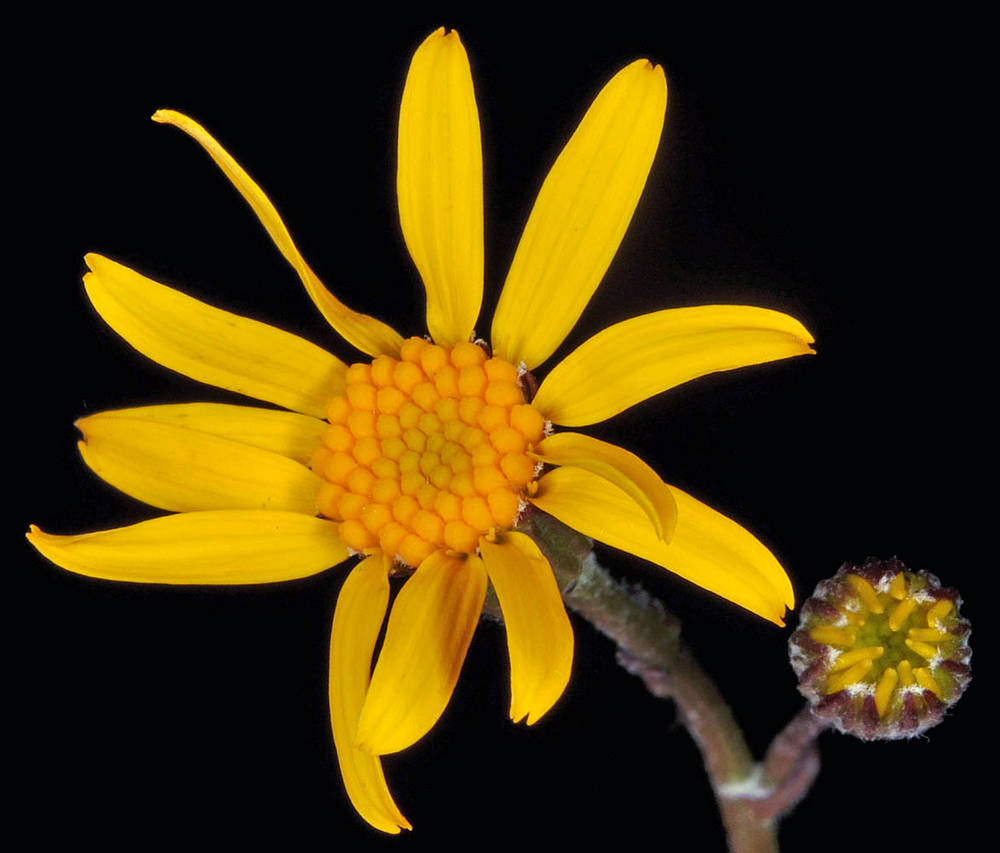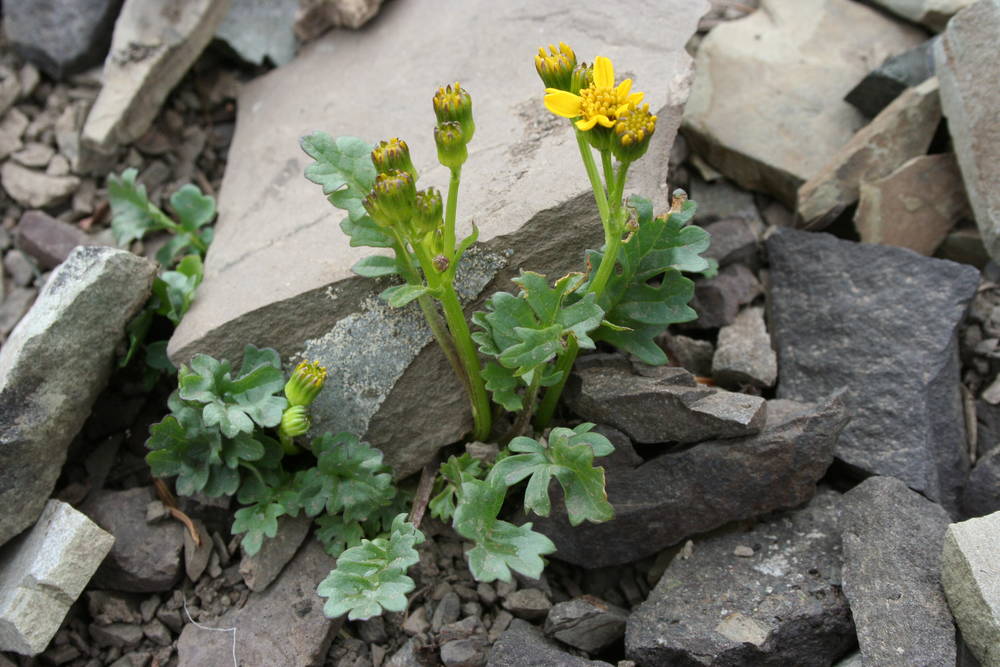Packera hesperia
Packera flettii
serpentine groundsel, Siskiyou butterweed, western ragwort
Flett's groundsel
1, glabrous or sparsely tomentose.
1 or 2–5, loosely clustered, glabrous or leaf axils sparsely pubescent.
blades ovate, oblanceolate, or spatulate, bases tapering, sometimes obtuse;
margins entire, subentire, or dentate, petiolate.
blades obovate to ovate or sub-lyrate, bases tapering;
margins deeply dissected or pinnatifid, crenate to crenate-dentate, petiolate.
lower similar to basal; middle and upper abruptly reduced and bract-like, sessile and clasping.
lower similar to basal; middle and upper absent or abruptly reduced distally, sessile.
cylindric;
bractlets narrow, red-tinged.
campanulate to broadly cylindric.
(8)13;
rays 6–10+ mm; deep yellow.
5 or 8;
rays 5–10 mm.
35–50+;
corolla tubes 2.5–3.5 mm;
limbs 3–4 mm.
20–30+;
corolla tubes 2.5–3.5 mm;
limbs 2.5–3.5 mm.
(13)21, green;
tips red or dark red;
surfaces densely tomentose basally.
(8)13, 4–7 mm, light green;
tips yellowish;
surfaces glabrous.
conspicuous.
0 or inconspicuous.
1.5–2 mm, glabrous;
pappi 5–6 mm.
1–1.5 mm, glabrous;
pappi 4–4.5 mm.
1–4+; in corymb-like arrays;
peduncles densely lanatetomentose;
bracts red-tinged.
4–10+; in subumbellate; cyme-like arrays, radiate;
peduncles glabrous;
bracts absent or inconspicuous.
=46.
=40.
Packera hesperia
Packera flettii
Serpentine, open woodlands. Flowering Apr–Jun. 300–1400 m. Sisk. CA. Native.
Until collections of this species were made in Del Norte County in California, Packera hesperia was known only from two counties in southern Oregon. It has since been listed as a species of conservation concern in California.
Exposed slopes, rocky or gravelly soils. Flowering Jun–Jul. 300–1100 m. CR. WA. Native.
In Oregon, P. flettii is known only from the Coast Range and is rarely collected there. It is also rare in Washington but has a much wider distribution. This species has a unique chromosome number for the genus (2n=40) and is not known to hybridize with other species.
Debra Trock
Debra Trock





